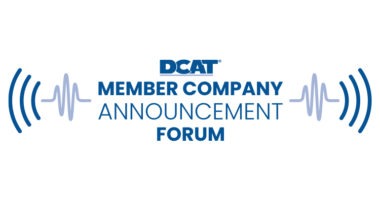Debate on Drug Pricing Reforms Takes a New Turn
Congress is debating several proposed legislative measures on drug pricing. A key point of debate is what role should global pricing have in setting drug pricing in the US. What is on the table, and what other issues are emerging in the policy debate on drug-pricing reform in the US?
Inside the Biden Administration’s plan for drug-pricing reforms
Last month (September 9, 2021), President Joe Biden, through the US Health and Human Services’ (HHS) Secretary Xavier Becerra, released a detailed plan to address prescription drug pricing. The Drug Pricing Plan is part of a broader initiative stemming from an earlier executive order issued in July 2021 by the President on promoting competition in the US economy.
The Drug Pricing Plan responds to the request in President Biden’s executive order for a plan to continue the effort to address the cost of prescription drugs, enhance domestic pharmaceutical supply chains, reduce the prices paid by the federal government for such drugs, and to address other components of price pricing. The plan, says the HHS, presents principles for equitable drug-pricing reform through competition, innovation, and transparency; describes promising legislative approaches; and summarizes actions already underway or under consideration across the HHS. The plan outlines both legislative and administrative actions to achieve these policy goals.
One of the key policies in this effort is a call for legislation that would allow the HHS Secretary to negotiate drug prices under Medicare Part B and Part D directly with bio/pharmaceutical companies and to make those prices available to other purchasers. Medicare is the US federal government healthcare program for individuals 65 and older. Medicare B applies to prescription drugs administered in a clinical setting, and Medicare D applies to all other prescription drugs (i.e., retail drugs). The plan calls for negotiation in Medicare Parts B and D, with those negotiated prices also available to commercial plans (including the marketplace) and employers who want to participate.
The plan also calls for other key measures requiring legilsative actions as outlined below.
- Medicare Part D reform, including a cap on catastrophic spending to protect beneficiaries from high out-of-pocket costs;
- Legislation to slow price increases over time on existing drugs;
- Legislation to speed the entry of biosimilar and generic drugs, including shortening the period of exclusivity, and policies in Medicare Part B to increase the prescribing of biosimilars by clinicians;
- Prohibition on so-called “pay-for-delay” agreements and other such practices deemed to reduce competition; and
- Investment in basic and translational research to foster innovation, including President Biden’s proposal to create the Advanced Research Projects Agency for Health (ARPA-H).
The plan also outlines administrative tools that the HHS can use to promote competition and reduce drug prices to advance the Administration’s policy goals, including:
- Testing models using value-based payments in Medicare Part B, in which payment for drugs is directly linked to the clinical value they provide patients;
- Testing models providing additional cost-sharing support to Medicare Part D low-income subsidy beneficiaries for using biosimilars and generics;
- Testing total cost of care models in Medicare to determine whether they produce changes in drug utilization, reductions in total spending, and improvements in patient outcomes;
- Data collection from insurers and pharmacy benefit managers to improve transparency about prices, rebates, and out-of-pocket spending on prescription medications;
- Continuing to implement the US Food and Drug Administration’s Biosimilars Action Plan and Drug Competition Action Plan and clarifying the approval framework for generic drugs to improve transparency and efficiency in the process; and
- Working with states and Indian tribes to develop drug-importation programs as a means to increase drug competition.
Congress reacts with other proposals, feedback
The President’s plan is engendering debate within Congress. One of the major legislative proposals on the table is a bill passed by the US House of Representatives in late 2019, the Elijah E. Cummings Lower Drug Costs Now Act (H.R. 3), but which has not yet moved in the US Senate. The key measures in the bill would require the HHS to negotiate drug prices directly with manufacturers, subject to a cap based on international reference pricing. Debate on the bill is ongoing as the US Congress considers it and other legislative proposals.
As part of that process, The Reduced Costs and Continued Cures Act, was introduced last month (September 14, 2021) into the House of Representatives that proposes an alternative to H.R. 3. The bill is sponsored by Representatives Scott Peterson (D-CA), Kurt Schrader (D-OR), Kathleen Rice (D-NY), Stephanie Murphy (D-FL) and Lou Correa (D-CA). While retaining certain key provisions of H.R. 3 and the President’s plan, such as allowing the HHS to negotiate drug prices under Medicare and capping out-of-pocket drug costs, it scales back or modifies those provisions.
Key highlights of the bill are outlined below:
- Allows the HHS Secretary to enter negotiations with manufacturers of products deemed to be “extraordinarily expensive” over the last decade to secure price concessions of between 25% and 35%;
- Allows price negotiation of products under Medicare B (prescription drugs administered in a clinical setting) that no longer have exclusivity and for which there is no competition on the market;
- Bases beneficiary cost-sharing at the pharmacy level on the post-rebate price of a drug rather than the original list price;
- Includes a mechanism that minimizes the impact of prescription drug costs on seniors with fixed incomes to allow their out-of-pocket expenses be paid throughout the calendar year via monthly installments instead of all at once;
- Provides a yearly out-of-pocket cap in Medicare for the expense of prescription drugs based on income levels in reference to the federal poverty levels: (1) $1,200 annual out-of-pocket cap for those at 300% or less of the federal poverty level; (2) $1,800 annual out-of-pocket cap for those at 300% to 400% of the federal poverty level; and (3) $3,100 annual out-of-pocket cap for those at above 400% of the federal poverty level;
- Establishes a $50-per-month out-of-pocket maximum for insulin;
- Requires greater transparency and increases insurer responsibility; and
- Promotes more low-cost options by increasing competition in the marketplace.
The introduction of the The Reduced Costs and Continued Cures Act and other onging discussions on proposed legislation have re-opened the debate on drug pricing and seek to moderate measures under the President’s plan and H.R. 3, the major piece of proposed drug-pricing legislation. These discussions bring to the table measures that would modify the mechanisms and extent to which the US government would be authorized to negotiate drug pricing under Medicare and potentially would apply benchmarks other than international price referencing in determing drug prices. The debate on drug pricing is significant not only on potential changes in US drug priding itself but also is part of the ongoing debate on the President’s proposed economic plan as different drug-pricing proposals would affect cost-savings projected for the US governmen and would be factored into an overall economic plan and related funding. That economic plan, the $3.5-trillion Build Back Better Act, is currently being debated in Congress under a legislative reconcilation process, and drug-pricing measures are an important part of that plan.
Separately, earlier this year (March 2021), three bills were introduced in the US Senate and are also part of the drug-pricing debate in Congress. These include: (1) The Prescription Drug Price Relief Act that would tie the price of prescription drugs in the US to the median price in Canada, the UK, France, Germany, and Japan (i.e., international pricing reference for US drug pricing; (2) The Medicare Drug Price Negotiation Act that would authorize the HHS to negotiate lower drug prices under Medicare Part D, (the prescription drug benefit); and (3) The Affordable and Safe Prescription Drug Importation Act that would allow patients, pharmacists, and wholesalers to import drugs from Canada and other countries.





